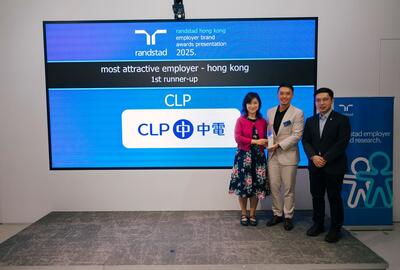the new world of work.
As pandemic measures come to an end in Asia, companies reckon with return-to-office friction, sparking conversations around long-term hybrid and remote work.
The return-to-office discussion is merely the beginning of a new negotiation between companies and their employees. The ensuing dialogue may help recast the mismatch of expectations against changes to how work should be performed after the pandemic in the era of advancing technology.
our white paper gathers insights from three surveys to understand what talent want:
- Randstad Employer Brand Research
download white paperwhat employees really care about?
Purpose is the ‘why’ behind the reason we work. The sense of purpose brings meaning to the daily grind and can increase overall satisfaction.
However, each of us define purpose differently.
how do you define your purpose at work?
Across Hong Kong SAR, Malaysia and Singapore, 1 in 3 respondents said that their purpose at work is to successfully complete their tasks and earn a steady salary.
This data may reflect the phenomenon known as ‘quiet quitting’, where employees limit their work contributions within their contractual requirements. Employees don’t avoid their responsibilities, nor will they proactively contribute more than what is legally required of them.
discover how your employees define their work purpose
Still, an alignment in values and purpose remains important among employees. This includes understanding how their work contributes to business growth or knowing that they are making the world a better place to live in.
flexibility: where work-life balance begins.
Do you know how people in Asia define ‘work-life balance’?
According to the Talent Expectations Survey, it’s all about having enough personal time for themselves.
how do you define work-life balance?
27% said that work-life balance is about having enough personal time to do the things they like with the people they care about.
Another 27% said that ‘work-life balance’ means having the flexibility to work anytime and anywhere they want as long as they can meet all the deadlines.
Flexible work enables workers to have greater control over how they want to spend their time working, so that they can carve out enough personal time to do the things they like with the people they care about.
time is a non-renewable resource
Employees’ insistence on hybrid and remote work is not just about their resistance to returning to the office.
There is a greater underlying implication: returning to the office when work can be done at home is not a good use of the hours that could go towards their personal time.
It’s a luxury to have enough personal time, no matter how employees choose to spend it. They want time to enjoy and relax so that they feel more recharged to focus better at work.
flexible work is no longer a benefit, it should already be a part of the employment terms
Even though 1 in 2 workers in Asia said that being able to work flexibly can help improve their work-life balance, 63% are not willing to take a pay cut in exchange for the opportunity to work remotely.
what flexible work can’t fix.
Flexible work is a good start to meeting talent expectations about work-life balance – but it’s not the be-all and end-all solution.
the top 3 situations that led to poor work-life balance in companies are:
- An overwhelming workload
- Unnecessary or excessive overtime
- An unreasonable boss and/or unsupportive colleagues
When an employee has too much work with limited or no support, they are more likely to sacrifice their personal time and mental health for work, resulting in burnout and eventual resignation.
the dangers of ‘virtual’ presenteeism
This culture of presenteeism hasn’t just disappeared with the rise of flexible work arrangements. According to a Cigna study, 37% of employees in Asia Pacific are clocking longer hours when working from home.
Another common fear that drives presenteeism – in the office or virtually – for workers is career FOMO, which is the fear of missing out on promotions, project opportunities and pay increments when working remotely.
This is why employees often feel compelled to come back online after working hours when they see an email or message from their managers to show their dedication to the job.
why do people dislike hybrid and remote work?
In our Talent Expectations survey, 31% of respondents said they dislike hybrid and remote work because they are unable to communicate or work effectively with their bosses and colleagues.
28% tend to work overtime because their colleagues send emails and messages at night and on weekends.
27% fear that they’ll miss out on work and promotion opportunities if they are not physically present at the office.
overcome the challenges of remote communications.
Poor communication in remote teams correlates strongly with the problem of overtime. Our survey shows that communication is a two-pronged issue that impacts employee satisfaction.
Teams may often find themselves working overtime to compensate for ineffective communication, while also contending with constant work communication after working hours.
Digital channels make it convenient for employers to reach their teams at any time – but this always-on approach will tire employees very easily and result in burnout.
be flexible with communication channels
Narrow your channels down to a few that work best for your team and empower them to select the right tools based on their needs.
fix your core hours
Find a window of time when everyone can be online and available for meetings and leave them to their own devices for the rest of the day.
limit over communication
While communication can help keep your team on the same page, too many calls and emails can be seen as a waste of time.
stay transparent and be available
Leaders should stay transparent and accessible by having an ‘open door policy’ to offer support to employees.
listen with your heart
Encourage your team members to be open about their personal challenges and practise empathetic listening to their needs to come up with solutions.
always be a step ahead of the changes
The Reimagine Work White Paper explores further into details the whole work-life balance experience and how employers and employees can work together to achieve the equilibrium.
As experts in talent recruitment and strategic HR solutions, we use data-driven insights as well as our knowledge and expertise to help transform your employer brand into the most powerful talent attraction tool.
Download the white paper to learn more about the latest talent expectations to attract the best talent the world has to offer.
related articles.
see all articles-
 02 July 2025
02 July 2025work-life balance emerges as top driver for successful talent attraction and employee engagement: 2025 employer brand research
-
 23 June 2025
23 June 2025why employees resign in hong kong: 2025 employer brand research.
-
 19 June 2025
19 June 2025CLP Power and HSBC wins big at the 2025 employer brand awards.
-
 09 June 2025
09 June 2025understanding and meeting hong kong’s talent expectations on diversity, equity and inclusion.
-
 14 April 2025
14 April 2025the manager’s role in career development, recruitment and retention: 2025 workmonitor.
-
 31 March 2025
31 March 20252025 workmonitor: millennials lack happiness and trust in the workplace.




